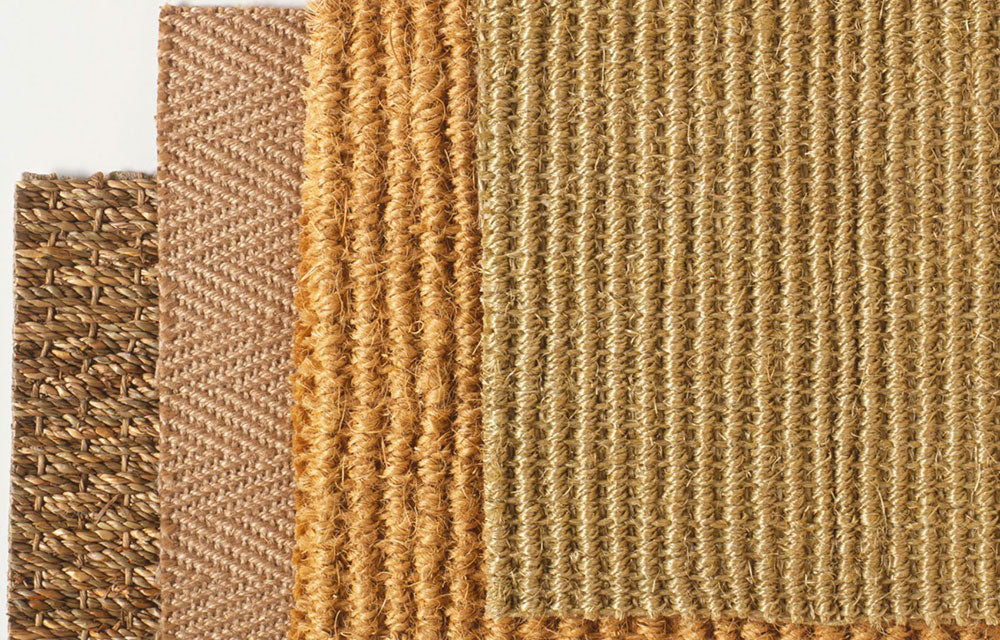Rug Material Guide: Natural Fibers vs. Synthetic Fibers

When it comes to choosing the perfect rug for your home, the material plays a pivotal role in not only determining its look and feel but also its durability and functionality. Two broad categories of rug fibers dominate the market: natural and synthetic. Each has its own set of characteristics and advantages. In this comprehensive guide, we'll explore the age-old debate of natural fibers vs. synthetic fibers, shedding light on the key differences, pros, and cons of each. By the end of this article, you'll be better equipped to make an informed decision about the ideal rug material for your space.
Natural Fibers vs. Synthetic Fibers: An Overview
Natural vs. Synthetic Fibers: Before we dive into the specifics, let's establish a clear distinction between natural and synthetic fibers. Natural fibers are derived from organic sources like plants, animals, or minerals. They include materials such as wool, cotton, silk, jute, and sisal. On the other hand, synthetic fibers are man-made and typically derived from petrochemicals. Common examples include nylon, polyester, acrylic, and polypropylene.
Natural vs. Synthetic Fibers: Durability and Longevity
One of the primary factors to consider when choosing a rug material is its durability. Natural fibers are renowned for their strength and resilience. Wool, for instance, is a natural fiber celebrated for its longevity. Wool rugs are known to withstand heavy foot traffic and can last for generations with proper care. Cotton is another natural option that is both durable and easy to maintain.
On the other hand, synthetic fibers are designed to mimic the durability of natural fibers while often offering enhanced stain resistance. Nylon and polyester, for instance, are synthetic options that are highly resilient and perfect for high-traffic areas. However, it's important to note that not all synthetic fibers are created equal, so it's essential to research the specific synthetic material used in a rug before making a decision.

Synthetic Silk vs. Natural Silk
Silk is a luxurious and highly sought-after material for rugs. Traditionally, silk used in rugs was exclusively natural silk, harvested from silkworms. However, advancements in technology have led to the creation of synthetic silk, which mimics the look and feel of natural silk. This presents a choice between synthetic silk vs. natural silk.
Natural silk rugs are known for their exquisite sheen and softness. They are often considered a symbol of luxury and opulence. However, they are also delicate and may require more care compared to other rug materials.
Synthetic silk, on the other hand, offers similar visual appeal but with increased durability and ease of maintenance. It is a practical choice for those who desire the elegance of silk without the high maintenance.
Natural vs. Synthetic Fabrics: Environmental Impact
In today's eco-conscious world, the environmental impact of your choices matters. Natural fibers have the upper hand in this regard. They are biodegradable and renewable. Materials like jute, sisal, and seagrass are not only sustainable but also contribute to a healthier environment.
Synthetic fibers, being petroleum-based, are not biodegradable and can take hundreds of years to break down in landfills. However, advancements in recycling technology have led to the creation of eco-friendly synthetic options.
Choosing the Right Material for Your Space
Ultimately, the choice between natural and synthetic fibers depends on your specific needs and preferences. Here are some key considerations to help you decide:
-
Traffic: If you're placing a rug in a high-traffic area, synthetic fibers like nylon or polyester may be more practical.
-
Allergies: Natural fibers like wool and cotton are hypoallergenic, making them ideal for those with sensitivities.
-
Eco-consciousness: If environmental sustainability is a priority, consider natural fibers like jute or sisal.
-
Aesthetics: Your design preferences also play a significant role. Natural fibers often exude warmth and texture, while synthetic fibers offer a wide range of color and pattern options.
-
Budget: Synthetic rugs are often more budget-friendly than their natural counterparts.
Adore Rugs: Your Source for Quality Flooring Solutions
For a diverse selection of rugs made from both natural and synthetic fibers, visit Adore Rugs. Their extensive collection includes materials that cater to various preferences and needs. Whether you're looking for the timeless elegance of natural silk or the durability of synthetic materials, Adore Rugs has you covered.
Explore Adore Rugs' Flooring Options
To complete your flooring needs, head over to Adore Rugs' flooring page. Discover a wide range of flooring solutions that complement your rug choice and elevate your home's interior.
In conclusion, the debate of natural fibers vs. synthetic fibers is a matter of personal preference, functionality, and sustainability. By understanding the unique qualities of each, you can make an informed decision that not only enhances the aesthetics of your space but also aligns with your values and practical requirements. Whether you opt for the timeless appeal of natural fibers or the innovative features of synthetic materials, Adore Rugs provides a diverse range of options to cater to your every need.
SHARE:



